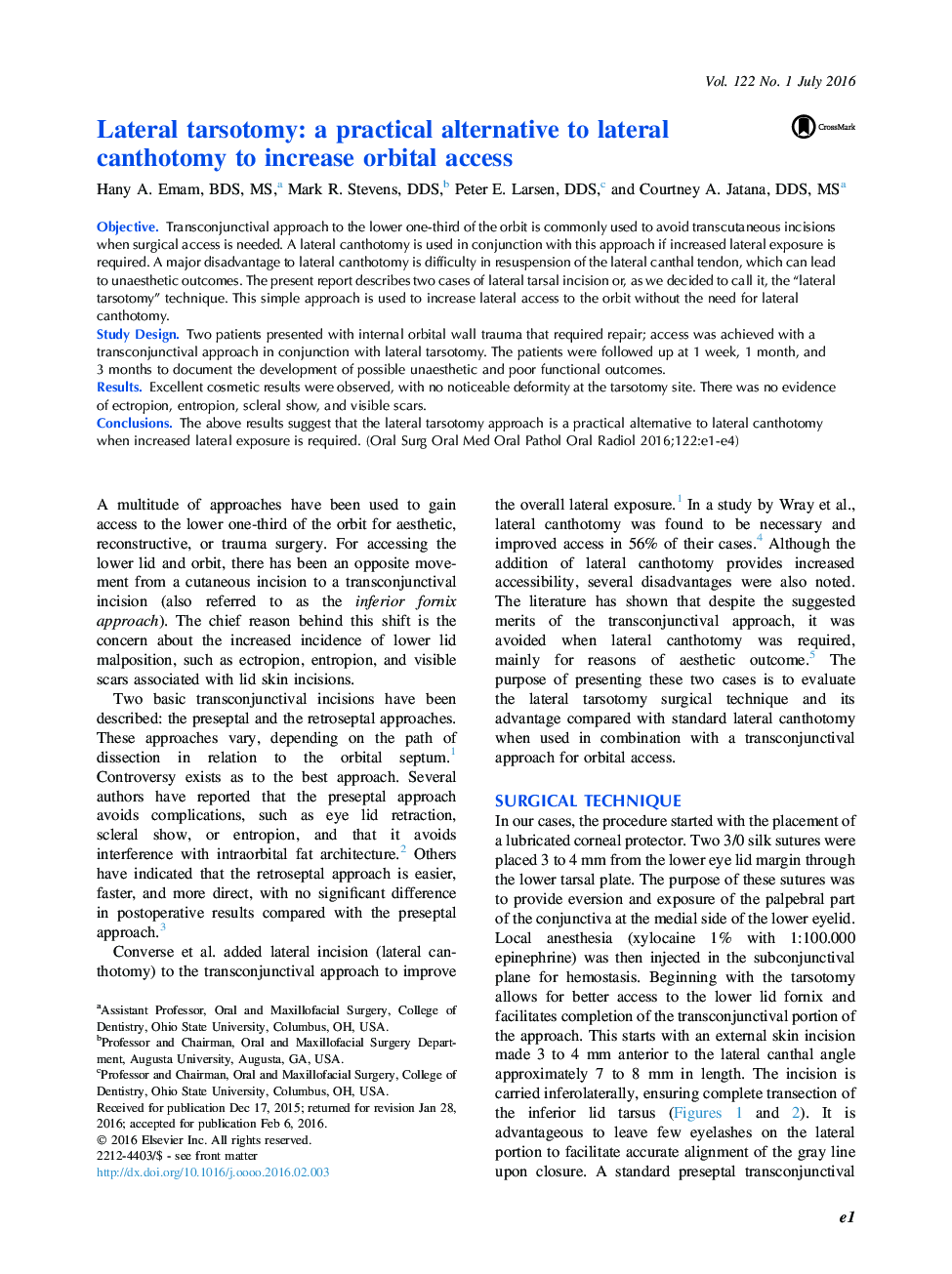| Article ID | Journal | Published Year | Pages | File Type |
|---|---|---|---|---|
| 3166495 | Oral Surgery, Oral Medicine, Oral Pathology and Oral Radiology | 2016 | 4 Pages |
ObjectiveTransconjunctival approach to the lower one-third of the orbit is commonly used to avoid transcutaneous incisions when surgical access is needed. A lateral canthotomy is used in conjunction with this approach if increased lateral exposure is required. A major disadvantage to lateral canthotomy is difficulty in resuspension of the lateral canthal tendon, which can lead to unaesthetic outcomes. The present report describes two cases of lateral tarsal incision or, as we decided to call it, the “lateral tarsotomy” technique. This simple approach is used to increase lateral access to the orbit without the need for lateral canthotomy.Study DesignTwo patients presented with internal orbital wall trauma that required repair; access was achieved with a transconjunctival approach in conjunction with lateral tarsotomy. The patients were followed up at 1 week, 1 month, and 3 months to document the development of possible unaesthetic and poor functional outcomes.ResultsExcellent cosmetic results were observed, with no noticeable deformity at the tarsotomy site. There was no evidence of ectropion, entropion, scleral show, and visible scars.ConclusionsThe above results suggest that the lateral tarsotomy approach is a practical alternative to lateral canthotomy when increased lateral exposure is required.
